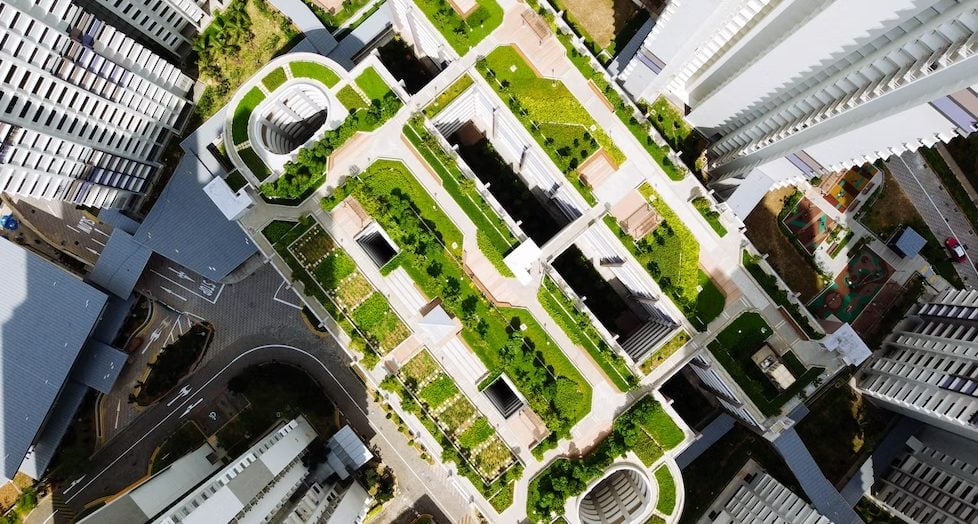BLOGS
Smart Home And Glass House: What It Brings To The Table
Smart home technology simplifies life.
It provides intuitive control over our home’s systems and appliances to simplify daily duties. We can control lighting, temperature, entertainment, and appliances with a few clicks on a smartphone or a voice command to a smart assistant.
We can spend more time on vital things by automating and remotely controlling these operations. Smart home technology prioritizes comfort and customization.
Living environments are personal. We can control lighting, temperature, playlists, and household routines of our smart homes. Smart home technologies let us customize our houses to match our moods and needs.
A smart home technology improves our comfort and well-being by customizing our homes. Glass houses are one of a kind structures because of the special way they make use of daylight, transparency, and proximity to nature. To make these buildings really sustainable, eco-friendly and energy-saving features must be incorporated into the design.
From maximizing passive design components to incorporating cutting-edge technologies and sustainable materials, this article delves into the myriad approaches that may be taken to build glass homes that are both energy-efficient and kind on the environment.
Smart Home And Glass House: Monitoring And Operating Homes
Smart home techonology lets homeowners monitor and operate their homes remotely. Homeowners can remotely inspect security cameras, manage equipment, receive notifications, and alter settings via mobile apps or web portals. Monitor and manage their homes from work, vacation, or errands gives homeowners more control, flexibility, and peace of mind.

Sustainable Building Methods
Reduced energy needs and increased environmental sustainability are made possible through the implementation of passive design principles in smart glass buildings.
In addition, these methods make the most of naturally occurring phenomena like daylight and air flow to reduce reliance on artificial sources of illumination, temperature regulation, and comfort.
Smart Home, Glass House, And Sustainable Building Methods: Shading
Shading can prevent heat gain in the summer and maximize sunlight gain in the winter. Overhangs, louvers, or external blinds placed in strategic locations can block the sun’s rays and keep rooms at a pleasant temperature.
Smart Home, Glass House, And Sustainable Building Methods: Insulation
Insulation helps maintain comfortable indoor temperatures and limits unwanted heat transfer.
Reduce heat loss by sealing drafts and using high-performance insulation like recycled cellulose or spray foam insulation in your walls, ceilings, and floors. Natural ventilation is the use of fresh air to cool a building without using mechanical cooling systems.
Smart Home, Glass House, And Sustainable Building Methods: Cross-Ventilation
Cross-ventilation can be encouraged and hot air released during hot seasons by installing windows, roof vents, or skylights that can be opened. Concrete and stone are examples of thermal mass components that can be incorporated to assist stabilize indoor temperatures.
These elements serve as heat sinks, making for a more comfortable and cost-effective indoor climate.
Superior Windows & Glazing Systems
The energy efficiency of a glass home is drastically affected by the glass used and the window systems used. Glass homes can be made more energy efficient by paying attention to different things.
Glass Coating
Glass coated with a low-emissivity (Low-E) coating reduces the transfer of heat while still letting in visible light. This decreases both summer heat gain and winter heat loss.
Insulated glass units (IGUs) with gas fills between the layers boost thermal performance and sound insulation, and can be double or triple paned. These devices create a thermal barrier, reducing heat loss and increasing efficiency.
State-of-the-art technologies like electrochromic or thermochromic glazing can automatically change the solar heat gain and window transparency in response to environmental factors. This provides for the most efficient use of daylight and air conditioning.
Selecting window frames made from recyclable materials like aluminum, wood, or composites that have strong thermal performance can reduce heat loss and increase savings on utility bills.

Lighting and Home Appliances That Save Energ
A glass house’s overall energy usage is strongly impacted by its efficient lighting and appliances. Here are some of the things that can be used to improve energy efficiency.
LED lighting throughout the glass house cuts down on energy use and has a longer lifespan than incandescent bulbs. Dimmers, motion detectors, and other forms of automatic light management can further reduce energy consumption.
When shopping for new appliances, look for the Energy Star label to know that they meet stringent efficiency requirements. Energy-efficient products like refrigerators, air conditioners, and heaters cut down on utility costs and carbon emissions.
Automatic management and optimization of lighting is made possible by smart lighting controls, which include occupancy sensors and planned programming, resulting in reduced energy use.
Combining Renewable Energy Sources
Smart glass houses can be made sustainable and self-sufficient through the use of renewable energy sources.
Electricity can be generated from the sun by installing solar panels on the roof or by utilizing clear photovoltaic glass. The use of fossil fuels for power generation can be decreased by storing excess energy in batteries or returning it to the grid.
Geothermal systems, which use ground-source heat pumps to heat and cool using the constant temperatures found underground. These technologies harness the Earth’s natural energy to provide climate management that is both effective and gentle on the planet.
Depending on site conditions, wind turbines can be built within the structure of the glass house to produce renewable energy. This is especially important for glass houses that are exposed to strong winds.
Sustainable Materials and Construction Techniques
The environmental impact of glass house construction can be minimized by the use of sustainable materials and eco-friendly building practices.
Recycled materials can be used for almost any building part, as well as insulation, flooring, and decorative touches, reducing waste and saving energy and money. The design may make use of recycled materials such as salvaged wood, glass, or metal.
In order to maximize energy efficiency and thermal comfort, it is recommended to use high-performance insulation materials with minimal embodied energy, such as cellulose or recycled fiberglass. In order to conserve water, it is important to install water-saving devices such as low-flow commodes, faucets, and showerheads, as well as rainwater harvesting systems for use in landscaping and gardening.
Green roofs and vertical gardens are a great way to boost insulation, lessen the impact of heat islands, and promote air quality.
These plant communities are important because they insulate the building naturally, increase biodiversity, and improve the visual appeal.
By incorporating passive design strategies, high-performance glazing, energy-efficient lighting and appliances, renewable energy integration, sustainable materials, and construction techniques, glass houses can be transformed into energy-efficient and environmentally friendly living spaces.
The transparent nature of glass houses allows for a strong connection with the outdoors while maintaining a comfortable and sustainable indoor environment.
Embracing these principles not only reduces energy consumption and environmental impact but also creates healthier and more enjoyable living environments for occupants.
In the metropolitan south, there is now the development of a project that will perfectly integrate nature, architecture, and cutting-edge technology.
This project will offer contemporary residences and modern hubs in calm, natural settings.

Discover Forresta in Villar City
The said community a 118-hectare mixed-use estate in Villar City in Alabang that is slated to become a beautiful “city in the forest” where premium grade upscale residential condominiums, ultra-exclusive residential lots and high-rise office towers, are merged and cradled in nature.
Billed to become a luxurious “city in the forest.”
The nature-inspired community will be the first of the four major estates that will develop within Villar Land, which encompasses around 2,500 hectares of prime raw land in the active area of Daang Hari.
It will also be the most conspicuous of the estates to rise within Villar Land.
What are you waiting for? Build a smart home now in Forresta.
Your home can be customized to different things that will fit your preferred smart home, such as having switchable glass. Keep in mind that there are many benefits of smart home, especially when it comes to security and safety of your family. Technology today is very advanced, and we must make the most out of it.
High tech equipment is on demand, especially for privacy. Nowadays, to control a home is an advantage.
Forresta is where nature and technology meets. In Forresta, the technology is unmatched, and is becoming more advanced.
Suggested Read: Sustainability In Glass Houses: Reducing Energy Costs In The Summer
Suggested Read: Sustainable Design That Won’t Ruin Your Home’s Charm
Suggested Read: Insulation Guide For Energy-Efficient Luxury Homes
Suggested Read: Cooling Amenities Inside Your Luxury Home
Suggested Read: Smart Features For Your Luxury Home















